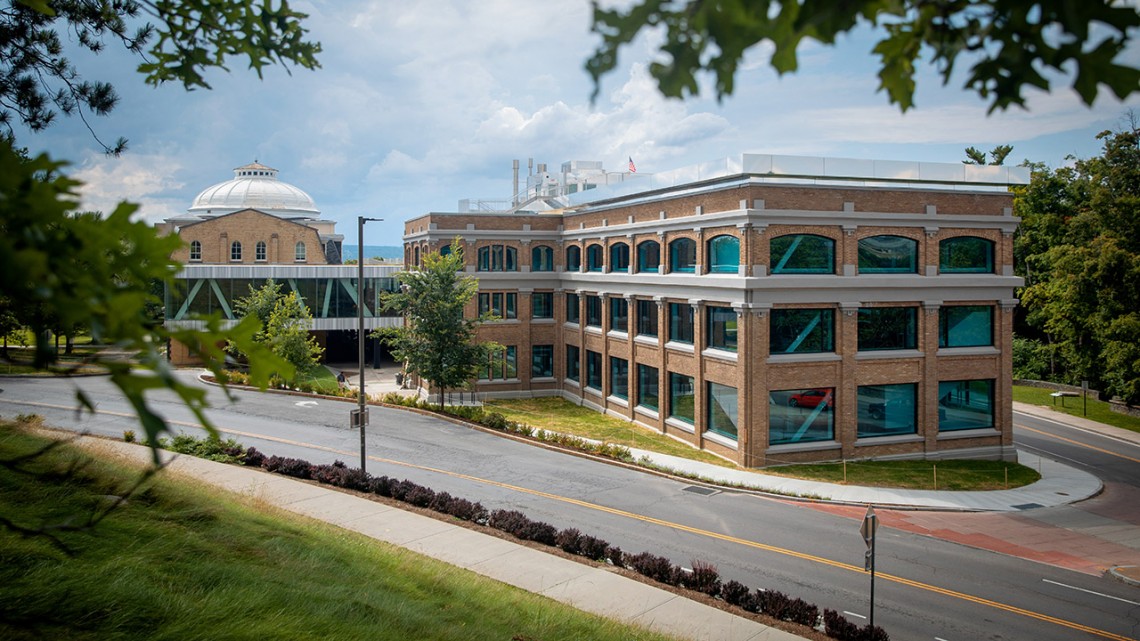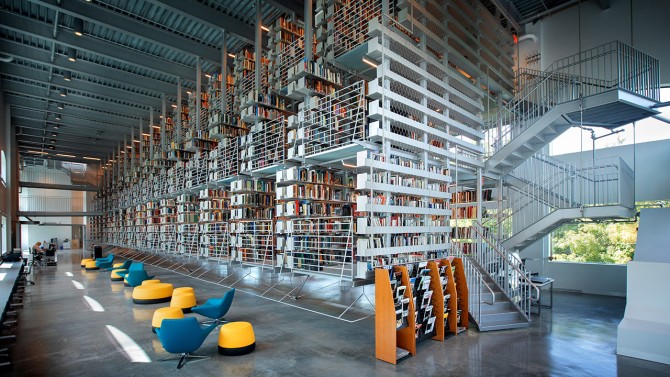
Cornell’s Mui Ho Fine Arts Library in Rand Hall – originally built in 1911 – earned the U.S. Green Building Council’s LEED Gold certification in late January.
Mui Ho Fine Arts Library earns LEED Gold certification
By Blaine Friedlander
Cornell’s Mui Ho Fine Arts Library in Rand Hall earned the U.S. Green Building Council’s Leadership in Energy and Environmental Design (LEED) Gold certification in late January.
This means the library was designed, built and now operates officially in a nationally accredited, sustainable way. The library’s first level features floating book stacks, open reading space and collaborative workspaces. Rand Hall’s ground floor supports a full shop space.
“The reinvention and restoration of Rand Hall took building reuse to a new level for our campus,” said Matt Kozlowski, Green Building program manager in Facilities and Campus Services.
For its gold placement, the building earned 63 points, including all 19 available points for optimizing energy performance, and all six available points for proximity to public transportation.
“Rand Hall’s renovation and the construction of the library converted a building in need of repair and reinvestment into an efficient, attractive and inspirational new cornerstone – at an important entry point onto Cornell’s central campus,” Kozlowski said.
The project repointed and repaired the yellow brick exterior, and replaced the roof with a well-insulated and reflective surface that improves the building’s thermal performance year-round. All of the building’s original windows were replaced with double-glazed panes, and significant insulation was added to the walls.
Kozlowski notes that fine-tuning that space was a challenge.
“Designers, architects and engineers for the library faced heating, cooling, ventilation and lighting complications,” he said, explaining that the design and engineering professionals performed extensive modeling that informed the design process.
Modeling included computational fluid dynamics that accounted for the unique floor plan, and for environmental factors such as building orientation and sunlight pouring into the building. With a space open to floors below, Kozlowski said, attention was paid to temperature stratification and ventilation using the stack effect, where hot air rises through the space.
“The energy model predicts a 55% energy-use reduction,” Kozlowski said. “The architects and engineers struck the right balance for where and how to add heating and cooling.”
The Mui Ho Fine Arts Library – named for architect Mui Ho ’62, B.Arch. ’66 – was designed by architect Wolfgang Tschapeller, M.Arch. ’87. The New York City-based STV is the architectural firm of record, with a team led by Harris Feinn, B.Arch. ’69, M.Arch. ’71. It was built by Welliver Construction of Montour Falls, New York.
Media Contact
Get Cornell news delivered right to your inbox.
Subscribe

